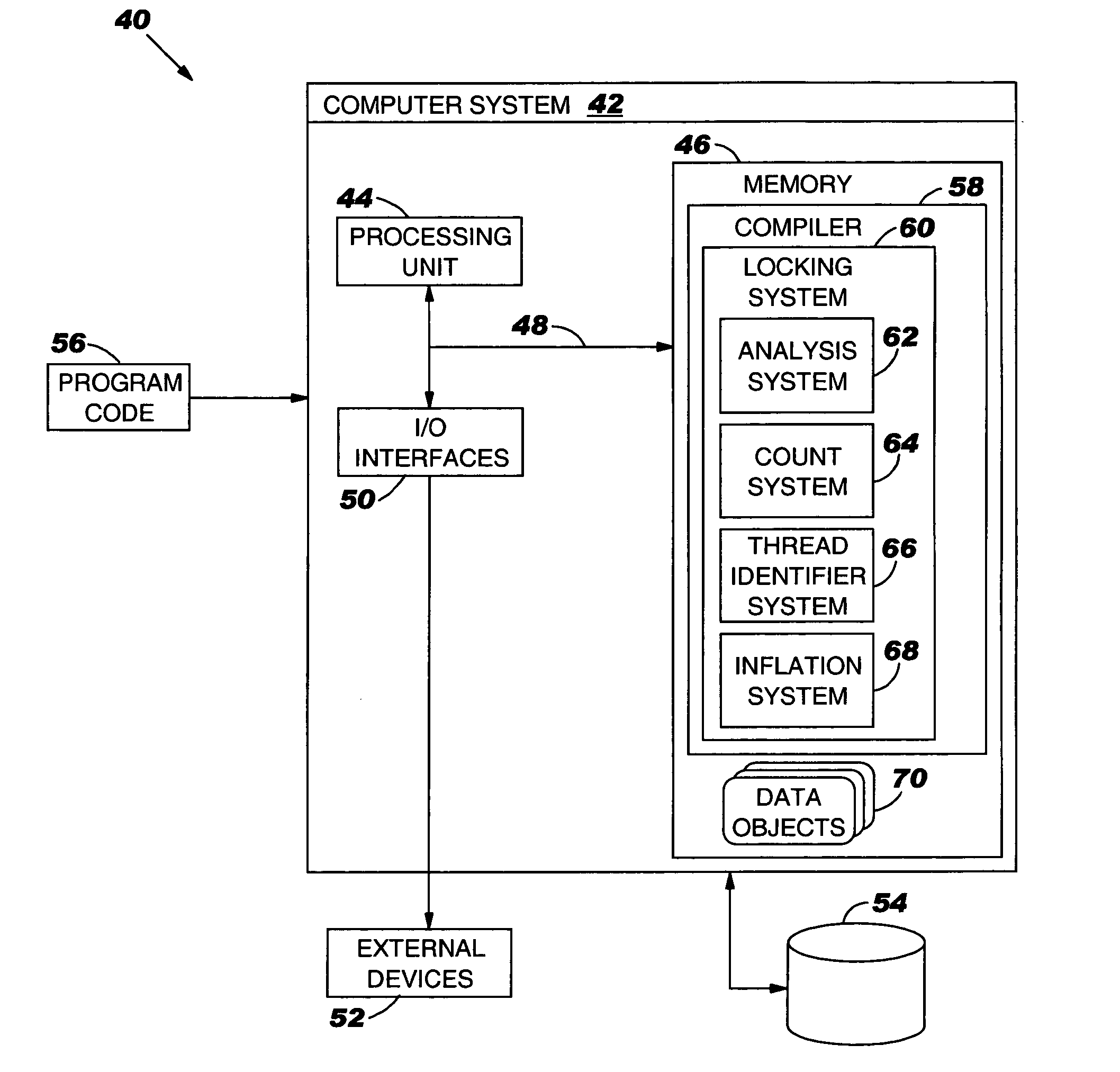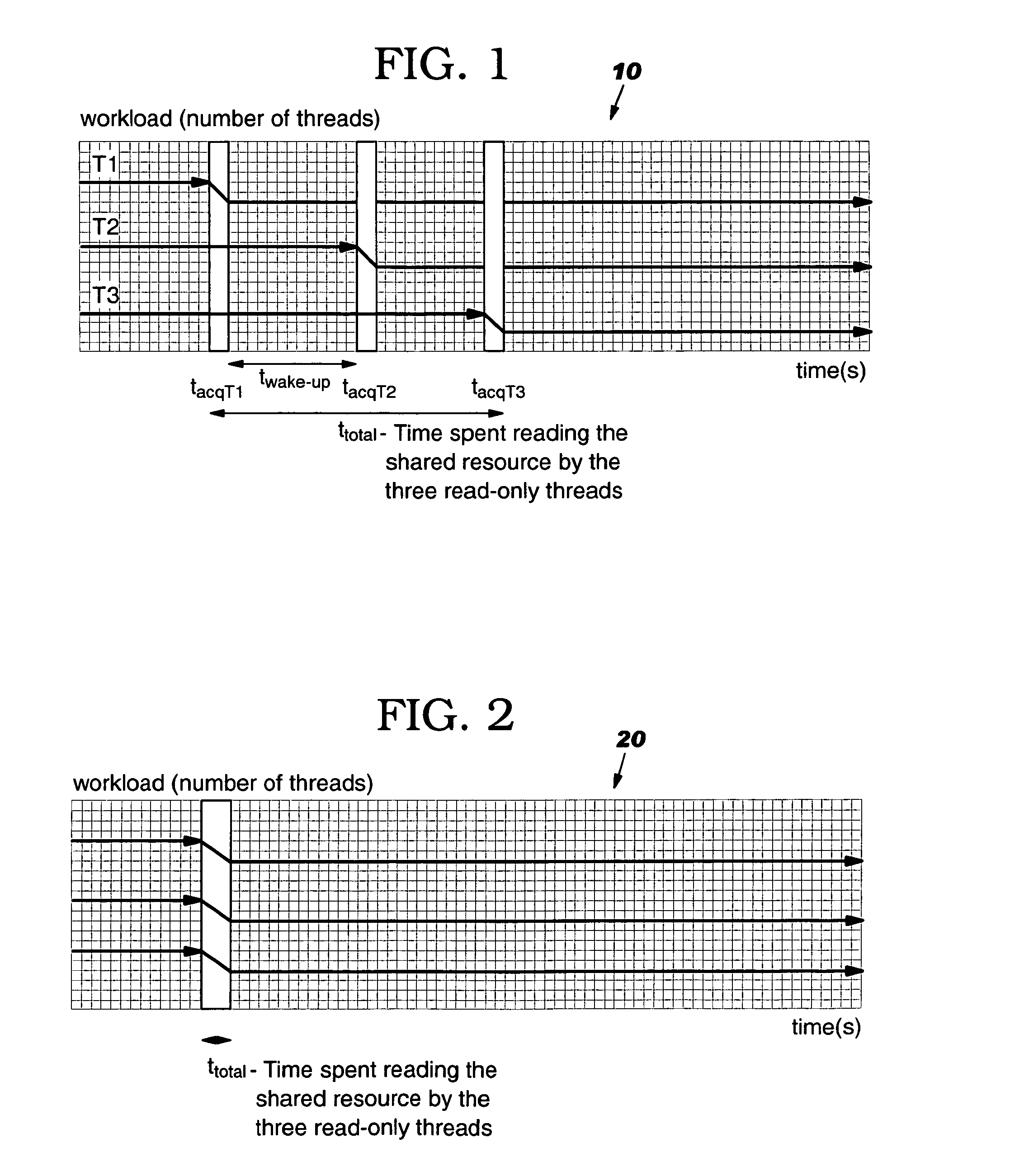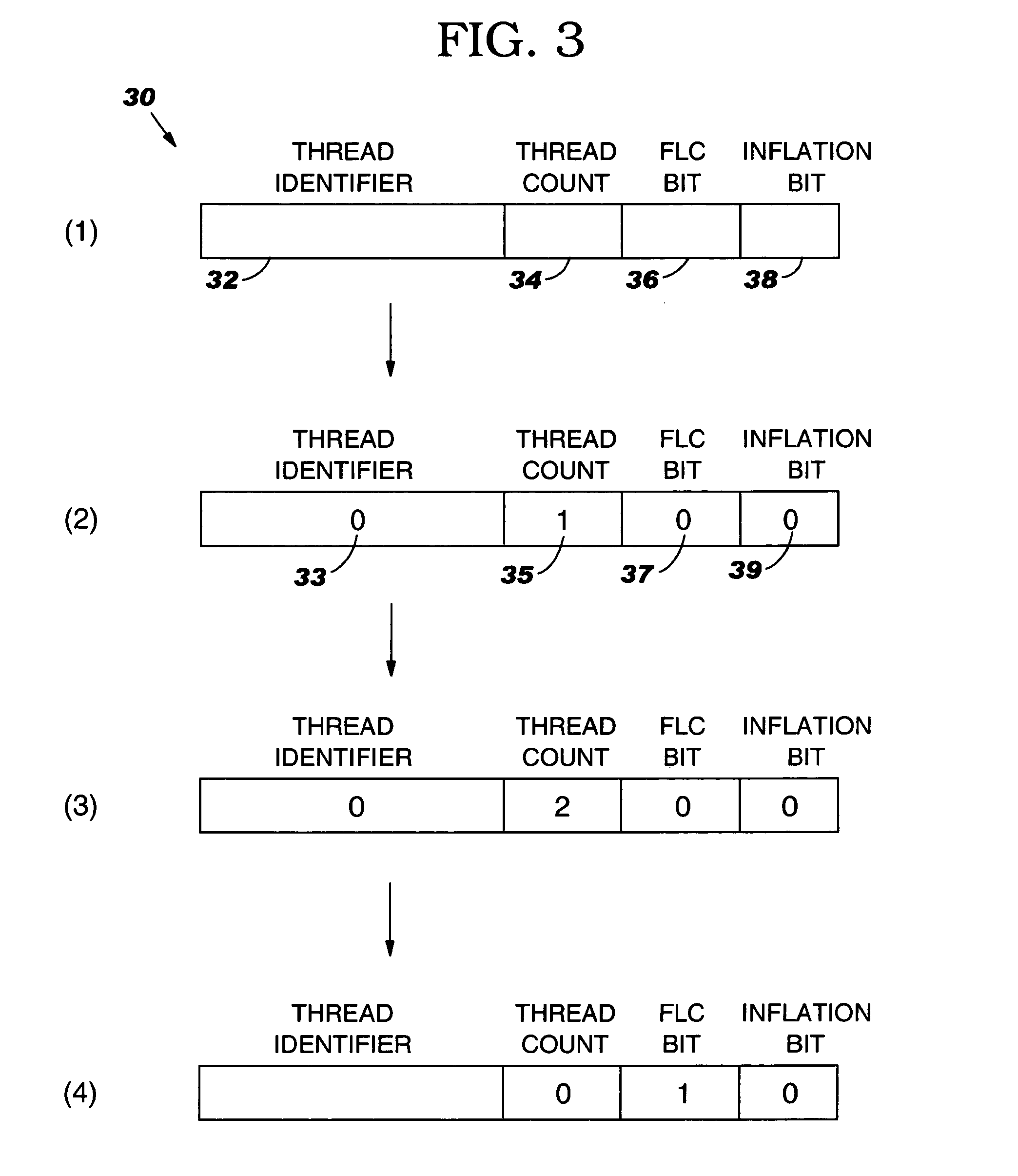Computer-implemented method, system and program product for establishing multiple read-only locks on a shared data object
a technology of shared data and read-only locks, applied in the direction of multi-programming arrangements, program control, instruments, etc., can solve the problems of program execution complete serialization, program cannot exploit the multiple processors, and the performance of thread safe code in applications can suffer
- Summary
- Abstract
- Description
- Claims
- Application Information
AI Technical Summary
Benefits of technology
Problems solved by technology
Method used
Image
Examples
Embodiment Construction
[0022] For convenience purposes, the Detailed Description of the Invention will have the following Sections:
[0023] I. General Description
[0024] II. Illustrative Example
[0025] III. Computerized Implementation
I. General Description
[0026] As indicated above, the present invention provides a computer-implemented method system and program product for establishing multiple read-only locks on a shared data objects. Specifically, under the present invention, a locking primitive associated with a shared data object is automatically transformed to allow multiple read-only locks if certain conditions are met. To this extent, when a read-only lock on a shared data object is desired, a thread identifier of an object header lock word (hereinafter “lock word”) associated with the shared data object is examined to determine if a read-write lock on the shared data object already exists. If not, then the thread identifier is set to a predetermined value indicative of read-only locks, and a thre...
PUM
 Login to View More
Login to View More Abstract
Description
Claims
Application Information
 Login to View More
Login to View More - R&D
- Intellectual Property
- Life Sciences
- Materials
- Tech Scout
- Unparalleled Data Quality
- Higher Quality Content
- 60% Fewer Hallucinations
Browse by: Latest US Patents, China's latest patents, Technical Efficacy Thesaurus, Application Domain, Technology Topic, Popular Technical Reports.
© 2025 PatSnap. All rights reserved.Legal|Privacy policy|Modern Slavery Act Transparency Statement|Sitemap|About US| Contact US: help@patsnap.com



